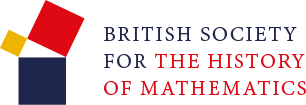History of Cryptography and Codes
History of Cryptography and Codes
Each year in May we run a history of mathematics conference at Birkbeck, organised by the British Society for the History of Mathematics (BSHM), and supported by the Department of Economics, Mathematics and Statistics at Birkbeck.
This year's event will look at the development of codes and cryptography from their origins to the present day. An exciting programme is planned, with six speakers on a range of topics in this area, including Clifford Cocks, the British mathematician famous for inventing in 1973 what's now called the "RSA" encryption algorithm (5 years before its independent discovery by Rivest, Shamir and Adleman). His work was classified at the time, so his contribution only came to light almost a quarter-century later.
Provisional Programme
9:30 Registration and Coffee/Tea
10.00 Opening remarks
10.10 Dr Elizabeth Quaglia (Royal Holloway, University of London)
Secrecy as an art - A journey through classical cryptography. In this talk, we will explore the history of secret messaging from its inception up to the modern era of cryptography, when secrecy evolved from art to science. In a journey through space and time, we will uncover the reasons behind the need for cryptography, and we will describe some of the most influential historical ciphers, as well as the techniques that broke them.
10:55 Klaus Schmeh (Journalist, Blogger (www.schmeh.org), Author)
Solving Historical Ciphers with Modern Means. Many old encryption methods are still hard to break today. For instance, cryptanalyzing a Turning Grill (a cipher device already known in the 18th century) is far from trivial. Many other encryption methods of historical importance can nowadays be broken, for instance Enigma messages from WW2, ADFGVX-ciphertexts from WW1, bigram substitutions, cipher slide messages, and double column transpositions. This presentation will introduce a number of non-trivial ciphers that played an important role in history and explain how they can be broken with modern means. This will be demonstrated with original ciphertexts from past centuries, some of which were deciphered only recently. A number of interesting improvements in this area have been developed in recent years. Research is still going on. In spite of all these efforts, there are still surprisingly many historical encryption methods (and original ciphertexts) that are unbroken to date. Among others, Enigma messages with less than 70 letters, double column transpositions with long key words, and numerous cold war ciphers still baffle cryptanalysts. However, research goes on and we might see further improvements in the near future.
11.40 Tea/Coffee
12:10 Sir John Dermot Turing on wartime cryptography
The Codebreakers of Bletchley Park. The success of the British codebreakers is widely praised but what impact did they actually have on the war? This talk will explain that many of the ideas about what Bletchley Park did are fundamentally wrong and describe both the process by which the two main German ciphers were broken and what the full impact of that was on the war.
Sir John Dermot Turing is the nephew and biographer of Alan Turing. He serves on the Bletchley Park Board and is a member of the Bletchley Park Trust's Historical Advisory Group.
12:55 – 14:15 Lunch (not included, but eating places nearby)
14:15 Professor Janos Körner on Shannon’s information theory
Claude Shannon in, and beyond, Information Theory. Mathematics is one but its different parts use a different intuition. One does and understands mathematics at an intuitive level. Shannon built up Information Theory single-handedly using his brilliant and revolutionary intuition. It took a decade for his first students at MIT to translate his ideas, his definitions and theorems into precise mathematical statements with proofs. Shannon’s theory sets precise theoretical limits to what is feasible in telecommunication. Yet his mathematical concepts go far beyond his engineering discipline and provide valuable tools in various parts of mathematics. We will illustrate this in combinatorics.
15:00 Professor Keith Martin (Royal Holloway, University of London)
From Bletchley Park to the Everyday. Since the Second World War, cryptography has evolved from an obscure technology used to protect wartime communications into an essential everyday technology. We chart some of the main developments along this journey, both technical and political. We will also cast an eye towards what the future might hold for cryptography.
15:45 Coffee/Tea
16:15 Clifford Cocks CB FRS (Heilbronn Institute and Visiting Professor, King’s College London)
The Discovery of Public Key Cryptography. Public key cryptography is now ubiquitous and a critical component of online security. There were two parallel discoveries of this approach to cryptography during the 1970s, one in secret at Government Communications Headquarters in the UK, and the second, later discovery in academia in the USA. The talk will explain what public key cryptography is and then describe the discovery process, drawing out the similarities and differences between the two tracks.
17:00 Close
